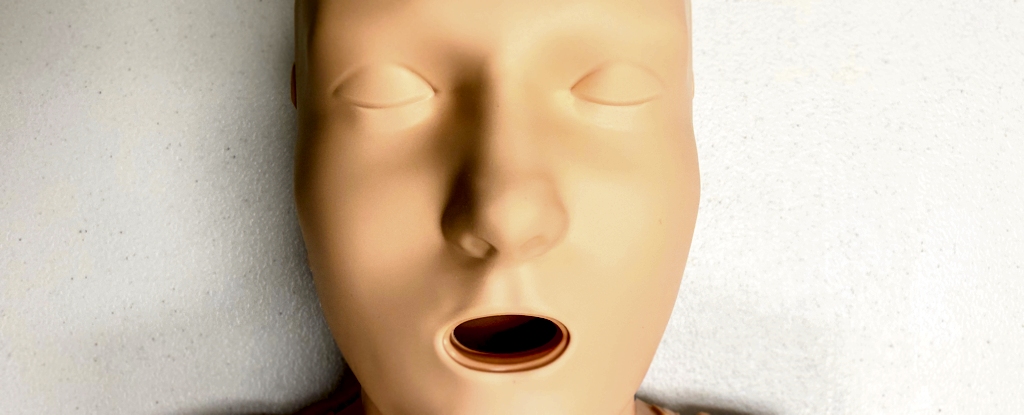When you turn on a lamp to illuminate a room, you experience light energy being transmitted in the form of photons, which are small, discrete packets of quantum energy.
These photons must obey the sometimes strange laws of quantum mechanics, which, for example, dictate that photons are indivisible but at the same time allow one photon be in two places at once.
Similar to the photons that make up light rays, they are indivisible quantum particles so-called phonons form a sound beam. These particles are created from the collective movement of trillions of atoms, much like a “stadium wave” in a sports arena is created from the movement of thousands of individual fans. When you listen to a song, you hear a stream of these very small quantum particles.
Originally intended for this Explain the heat capacity of solidsPhonons are predicted to obey the same rules of quantum mechanics as photons. However, the technology for generating and detecting single phonons has lagged behind that for photons.
Some of this technology is only now being further developed my research group at the Pritzker School of Molecular Engineering at the University of Chicago. We explore the fundamental quantum properties of sound by splitting phonons in half and entangling them.
My group’s fundamental research on phonons could one day enable researchers to develop a new type of phonon quantum computera so-called mechanical quantum computer.
Splitting sound through “bad” mirrors
To explore the quantum properties of phonons, our team uses acoustic mirrors that can direct sound beams.
Our latest experiments, published in a current edition of ScienceHowever, these are “bad” mirrors, so-called beam splitters, which reflect about half of the sound directed at them and let the other half through.
Our team decided to investigate what happens when we aim a phonon at a beam splitter.
Since a phonon is indivisible; it cannot be shared. Instead, after interacting with the beam splitter, the phonon ends up in a so-called “beam splitter”.overlay state.’ In this state, paradoxically, the phonon is both reflected and transmitted, and you are equally likely to detect the phonon in both states.
frameborder=”0″allow=”accelerometer; auto play; clipboard writing; encrypted media; Gyroscope; picture in picture; web share”allowfullscreen>
If you intervene and see the phonon, measure half the time it was reflected and half the time it was transmitted; In a sense, the state randomly chosen through the detector. Without the detection process, the phonon remains in the heterodyne state, where it is both transmitted and reflected.
This superposition effect was observed in photons many years ago. Our results suggest that phonons share the same property.
Entangled phonons
After my team showed that phonons, like photons, can undergo quantum superposition, I asked about it a more complex question. We wanted to know what would happen if we sent two identical phonons into the beam splitter, one from each direction.
It turns out that each phonon goes into a similar superposition state of half transmitted and half reflected radiation. But due to the physics of the beam splitter, the phonons will quantum mechanically interfere with each other if we time them precisely.
What emerges is actually a superposition state of two phonons going one way and two phonons going the other way – so the two phonons are like this quantum-mechanically entangled.
In Quantum entanglementEach phonon is in a superposition of reflected and transmitted, but the two phonons are related. This means that detecting that one phonon was sent or reflected forces the other phonon to be in the same state.
So when you detect something, you will always detect two phonons moving in one direction or the other, never a phonon moving in both directions. The same effect for light, the combination of superposition and interference of two photons is called Hong Ou Mandel Effectafter the three physicists who first predicted and observed it in 1987. Now my group has demonstrated this effect with sound.
The future of quantum computing
These results suggest that it may now be possible to build a mechanical quantum computer using phonons.
There are ongoing construction efforts optical quantum computers which only require the emission, detection and interference of single photons. These run in parallel with efforts to build electrical systems quantum computerwhich promise an exponential acceleration of certain problems by using a large number of entangled particles, for example the factorization of large numbers or the simulation of quantum systems.
A quantum computer using phonons could be very compact and self-contained, based entirely on a chip similar to a laptop computer’s processor. Its small size could make it easier to implement and use if researchers can further expand and improve phonon-based technologies.
that of my group Experiments with phonons Use qubits – the same technology that powers quantum electronic computers – which means that as phonon technology catches up, there is an opportunity to integrate phonon-based computers with quantum electronic computers. This could create new, potentially unique computing capabilities.![]()
Andrew N ClelandProfessor of Molecular Engineering Innovation and Enterprise, Pritzker School of Molecular Engineering at the University of Chicago
This article was republished by The conversation under a Creative Commons license. read this original article.





